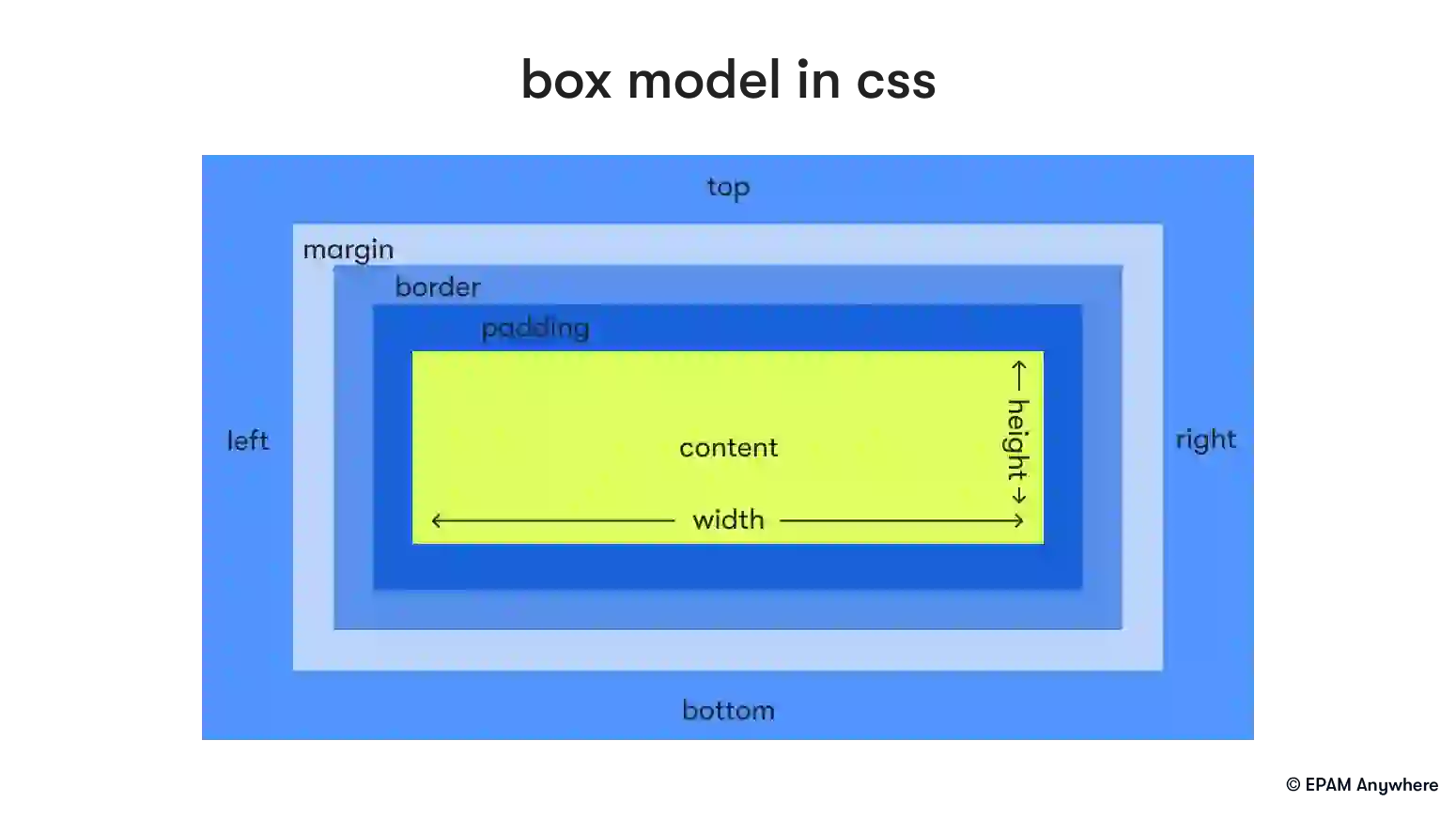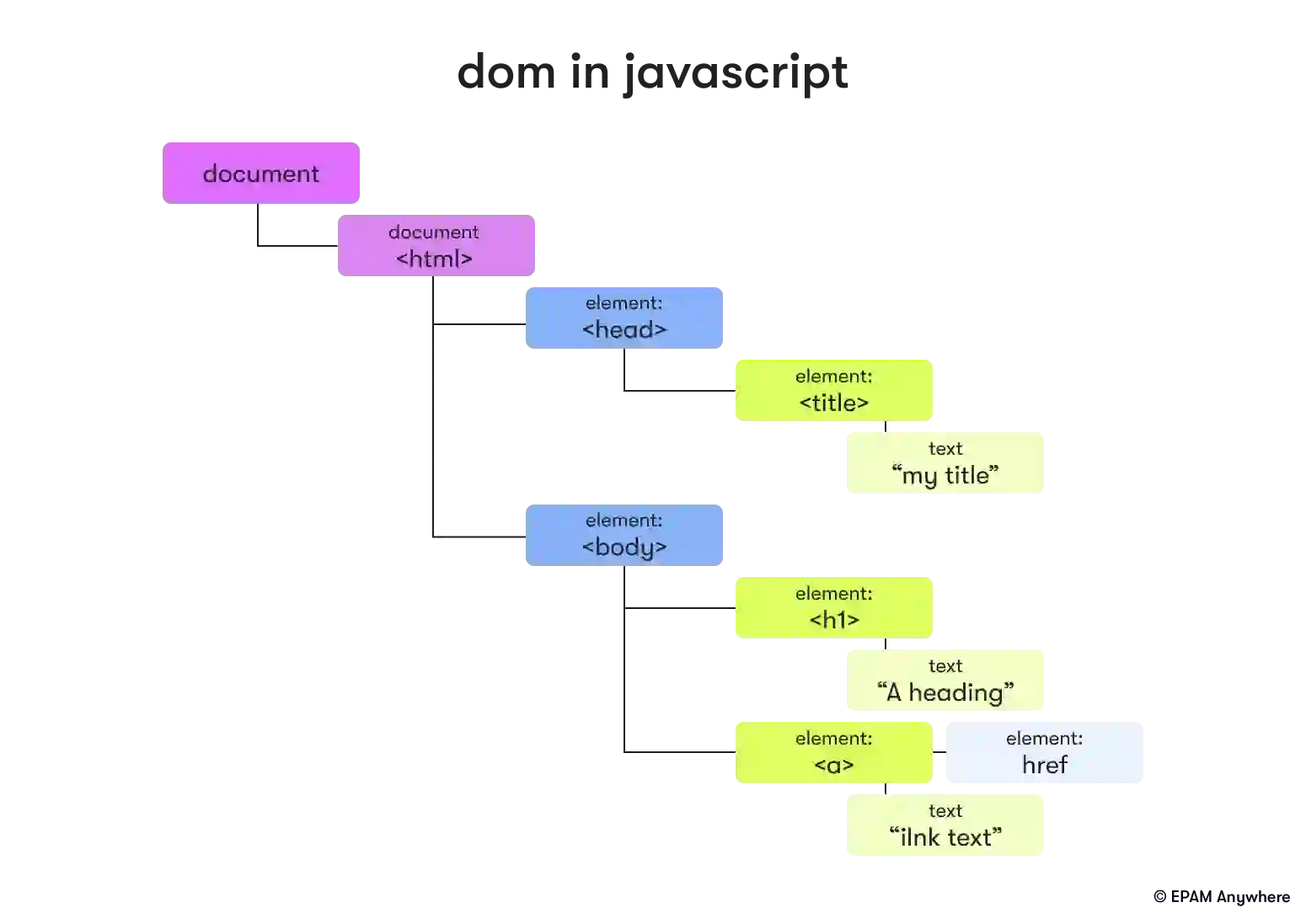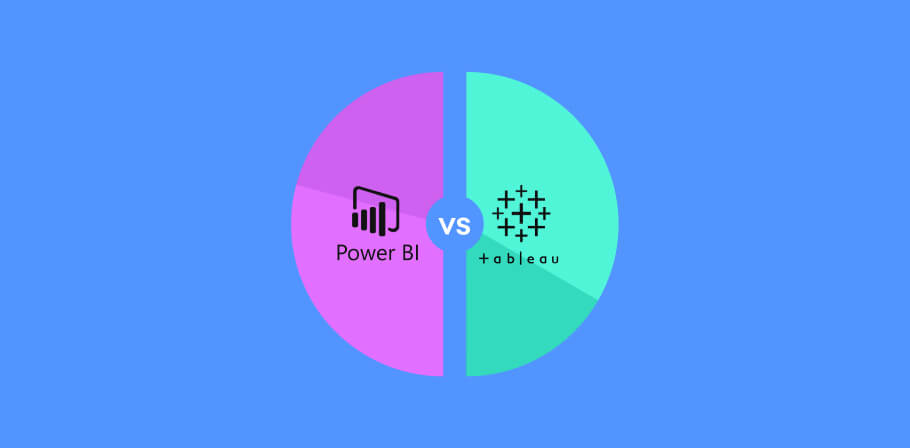The following questions and answers have been reviewed and verified by Nikita Shevtsiv, Senior Software Engineer, Certified Technical Interviewer, EPAM Anywhere. Thanks a lot, Nikita!
Looking to ace your next remote web developer job interview or preparing for one? We've got you covered! With the increasing demand for skilled web developers in the global remote job market, it's essential for candidates to come prepared.
Here is our ultimate collection of 28 web developer interview questions specially curated to test your knowledge and expertise across various aspects of web development. From basic to advanced, these questions ensure you're ready to tackle tough interview scenarios when applying for remote web developer jobs.
First, let’s dive into the core of web development with the common web developer interview questions below. This section focuses on the foundational concepts and skills that every web developer should possess. Whether you're a seasoned professional or a beginner, these questions are essential for gauging your understanding of the fundamental principles in web development.
tired of job hunting?
Scroll no more. Send us your CV and we'll match it with our best remote web developer jobs for you.
1. What is the difference between client-side and server-side programming?
Client-side programming involves writing code that runs on the user's browser and is responsible for user interface interactions, while server-side programming deals with code executed on a web server. This code typically processes requests, communicates with databases, and generates dynamic content for websites.
2. What is the use of HTTP cookies?
HTTP cookies are small pieces of data sent from a website and stored in the user's browser. They're used to maintain user-specific information, such as login session identifiers, user preferences, and tracking user activity.
3. Explain the concept of responsive web design
Responsive web design is a method of designing websites to provide a consistent user experience across a variety of devices and screen sizes. This approach involves using flexible layouts, fluid grids, and CSS media queries to adapt the layout and appearance of a website based on the user's device and screen resolution.
4. What is a content delivery network (CDN)?
A content delivery network (CDN) is a distributed system of servers strategically placed across the globe to deliver web content (e.g., HTML, images, videos) to users more quickly and efficiently. CDNs minimize delays in loading web page content by caching and delivering it from the server geographically closest to the user.
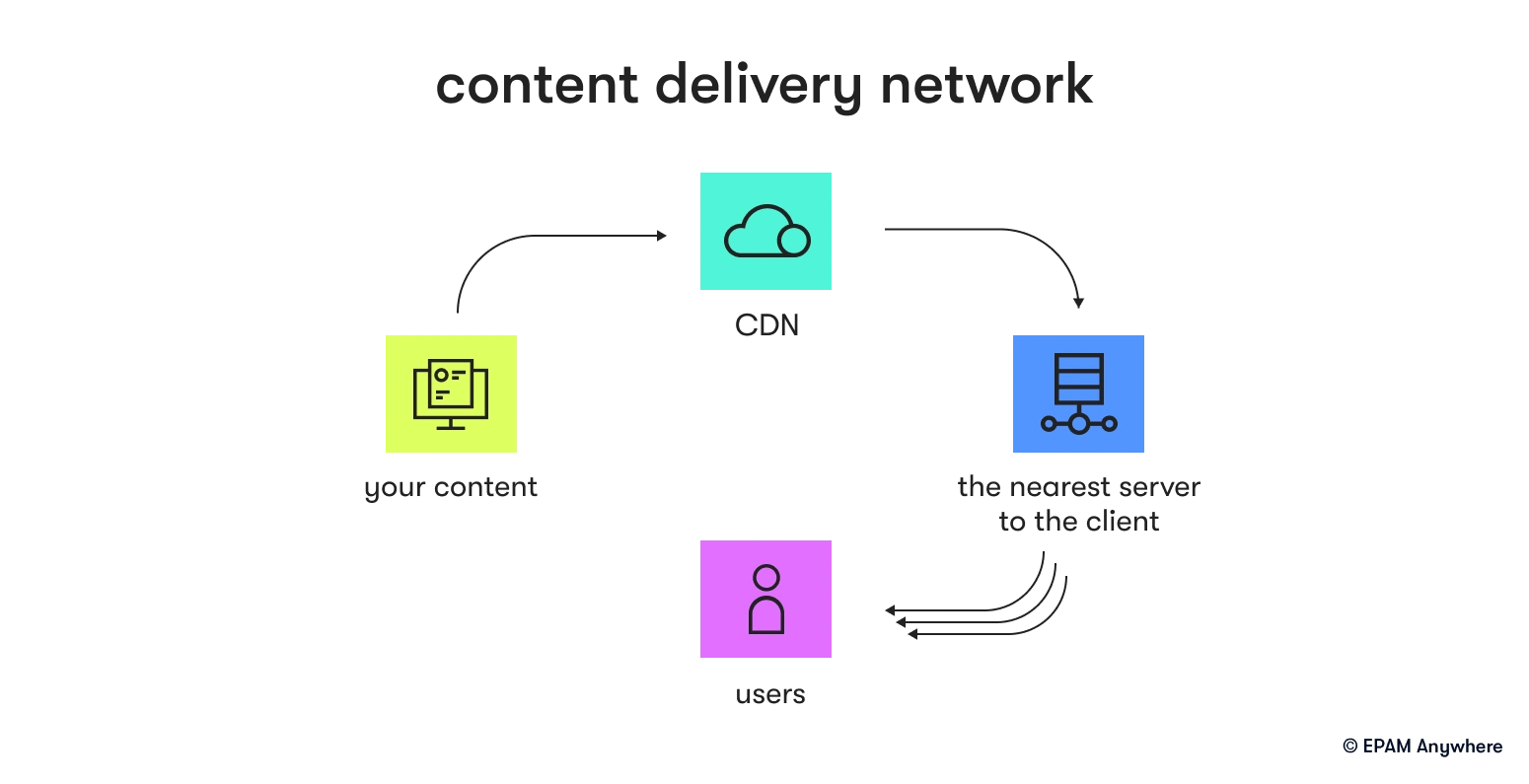
5. What are some common performance optimization techniques for web applications?
Some common performance optimization techniques include:
- Reducing HTTP requests by combining files, using sprites, inlining CSS and JavaScript
- Minimizing file sizes through minification, gzip compression and image optimization
- Caching assets on the client-side and server-side
- Using a CDN to reduce latency
- Improving server response time
6. What is cross-origin resource sharing (CORS)?
Cross-origin resource sharing (CORS) is a security feature that enables web applications from one domain to request resources, like APIs or scripts, from a domain different from their own. CORS works by adding specific HTTP headers to control which origins have access to the resources and under what conditions.
7. What is the purpose of HTML, CSS, and JavaScript in web development?
HTML (HyperText Markup Language) is used to structure content on the web, while CSS (Cascading Style Sheets) is responsible for styling and layout, making the content visually appealing. JavaScript is a programming language that adds interactive functionality to websites, such as form validation, animations, and communication with APIs.
8. What does the box model in CSS represent?
The CSS box model is a rectangular layout paradigm that describes the composition of every HTML element on a web page. It consists of four parts: the content, padding (the space between the content and border), border (the edge around the padding), and margin (the space surrounding the border).

9. What is event propagation in JavaScript?
Event propagation is the flow of event processing through the DOM (document object model) tree. It consists of three phases: capturing (the event flows from the top of the tree towards the target element), target (the event reaches the target element), and bubbling (the event flows back up the tree from the target element). Developers can control this propagation through `stopPropagation()` and `preventDefault()`.
10. What is the document object model (DOM)?
The document object model (DOM) is a programming interface for HTML and XML documents that represents the structure of a document as a tree of objects. Each object represents a part of the document, such as an element, attribute, or text node. DOM allows developers to interact with and manipulate web pages' structure, content, and style using scripting languages like JavaScript.
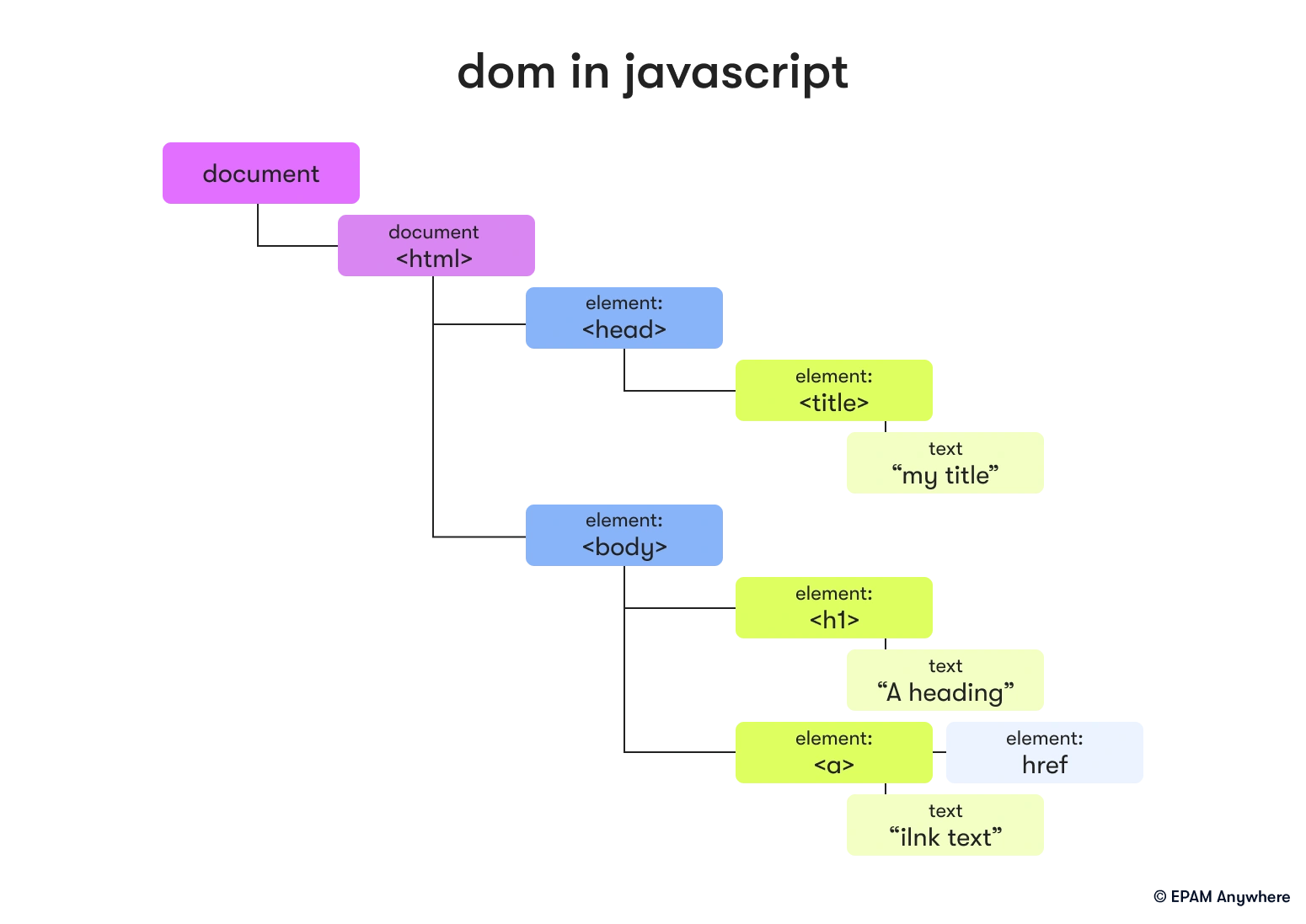
11. How can you achieve progressive rendering in web applications?
This is one of the senior web developer interview questions where you’re expected to showcase your in-depth knowledge, problem-solving abilities, and deep understanding of complex web development concepts.
Progressive rendering involves breaking down a web page into smaller, more manageable pieces, and then prioritizing the rendering of the most important content first. Methods to achieve progressive rendering include asynchronous loading of resources, lazy loading of images, and using server-side rendering for initial page loads.
12. What are the benefits of using CSS pre- and post-processors?
CSS pre-processors, like Sass, Less, and Stylus, extend CSS with features like variables, mixins, and nested rules, making it more maintainable and less repetitive. CSS post-processors, like Autoprefixer and PostCSS, help with vendor-prefix handling, adding polyfills, and optimizing the CSS for better performance.
13. How do you handle issues with browser compatibility?
To handle browser compatibility issues, you should:
- Use feature detection with tools like Modernizr to provide fallbacks or polyfills for unsupported features
- Implement progressive enhancement and graceful degradation techniques
- Use CSS reset or normalize.css to maintain consistent styles across browsers
- Test your application using different browsers and devices
14. What are the different ways to implement secure authentication in web applications?
Secure authentication in web applications can be implemented using techniques like:
- Securely storing passwords using hashing and salting techniques, such as bcrypt
- Implementing two-factor authentication (2FA)
- Using secure password reset processes, with tokens and expiration time limits
- Employing HTTPS to encrypt data communication between client and server
15. Explain web components and their benefits
Web components are a set of web platform APIs that enable developers to create reusable, modular, and encapsulated custom HTML elements. The benefits of web components include:
- Enhanced reusability and maintainability of code
- Reduced dependencies on external libraries and frameworks
- Easier to style and theme, providing better consistency in UI
- Improved performance by reducing DOM complexity
16. What is the difference between React and Angular?
React is a JavaScript library created by Facebook, primarily used for building fast and responsive user interfaces. It's focused on a component-based architecture and leverages a virtual DOM, enabling efficient updates and rendering.
Angular, developed by Google, is a full-fledged framework that provides a complete solution for building dynamic single-page applications. It follows a declarative programming approach, uses a real DOM, and offers tools like dependency injection, two-way data binding, and a built-in module system.
17. What is XSS, and how can you prevent it?
Cross-site scripting (XSS) is a type of security vulnerability that lets attackers inject malicious scripts into web pages, leading to unauthorized access, data theft, and other harmful consequences. To prevent XSS, you need to:
- Validate and sanitize user inputs and outputs
- Implement a content security policy (CSP) to restrict the sources of scripts and other resources
- Use secure methods like `textContent` instead of `innerHTML` for DOM manipulation
18. Explain the concept of server-side rendering (SSR) vs. client-side rendering (CSR)
Server-side rendering (SSR) is the process where the server generates a full HTML page for the initial request, improving the first meaningful paint and SEO. Client-side rendering (CSR) occurs when the browser loads an empty HTML document and then renders the content using JavaScript. CSR might lead to a slower initial load but enables better interactivity, faster subsequent page loads, and easier development of single-page applications (SPAs).
19. What is asset bundling, and why is it important?
Asset bundling combines multiple CSS, JavaScript, and other files into single or few minified files. This process reduces the number of HTTP requests, improving load times and enhancing performance. It also helps with cache management, versioning, and organizing code.

20. Explain the concept of server push in HTTP/2
Server push is a feature in HTTP/2 that allows the server to proactively and asynchronously send resources to the client's cache, even before they are requested. This helps reduce latency, particularly for content that the server knows will be needed by the client, such as CSS and JavaScript files.
21. What is the role of state managers?
State managers are tools used to manage and maintain application-level state consistently, predictably, and scalably. They centralize the state, providing a Single Source of Truth (SSOT) and facilitating data flow control and manipulation, resulting in better code organization, improved performance, and easier debugging. Popular state managers include Redux, MobX, and Vuex, depending on the chosen framework/library.
To optimize the critical rendering path, you can:
- Minify and compress text-based assets (e.g., HTML, CSS, JavaScript)
- Inline critical CSS and defer non-critical CSS
- Load JavaScript asynchronously or defer its execution
- Optimize images and use responsive image techniques, like `srcset` and `sizes` attributes
- Employ a CDN to cache and serve assets more quickly
22. What are the benefits of using CSS Grid and Flexbox layouts?
CSS Grid and Flexbox are powerful layout systems that offer the following benefits:
- Responsive and fluid designs with auto-adapting layouts
- Simpler code with fewer CSS rules and hacks needed compared to legacy layout techniques (e.g., floats and tables)
- Better alignment and spacing control, making UI elements more visually cohesive
- More readable and maintainable code
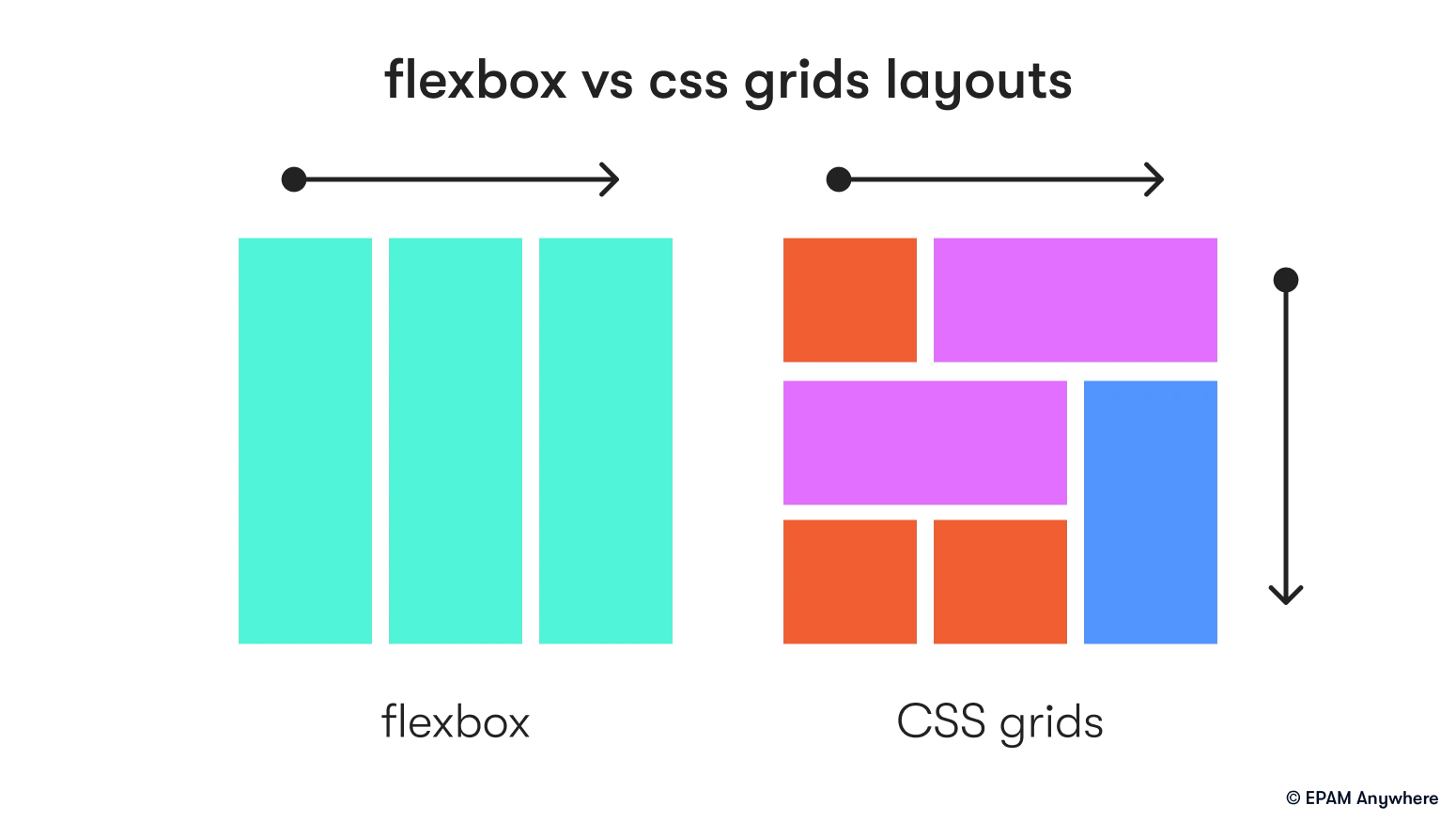
23. What is the role of TypeScript?
TypeScript is a superset of JavaScript, developed by Microsoft, that introduces static typing to the language. The main role of TypeScript is to provide type checking and enforcement, enabling better tooling, code completion, and error prevention during development.
Additionally, TypeScript offers features like interfaces, generics, and namespaces that improve code maintainability, readability, and scalability. TypeScript code is transpiled to pure JavaScript before being executed in the browser or on the server (using Node.js).
24. What is a single-page application (SPA), and how does it differ from a traditional multi-page application (MPA)?
A single-page application (SPA) loads the entire application in one initial request and dynamically updates the content as users interact with it, without the need for page reloads. SPAs provide smoother and faster user experiences but can be complex to build and may have SEO challenges. Conversely, traditional multi-page applications (MPAs) reload the entire page for each interaction, requiring more server resources and leading to a slower user experience.
25. Explain JavaScript Promises and their advantages over callbacks
JavaScript Promises represent an asynchronous operation's eventual completion or failure, providing a way to manage and chain asynchronous actions in a more readable, maintainable way. Promises have advantages over callbacks, such as:
- Improved error handling and exception propagation
- The ability to chain multiple asynchronous actions easily and concisely
- Prevention of callback hell, where nested callbacks make code harder to understand and maintain
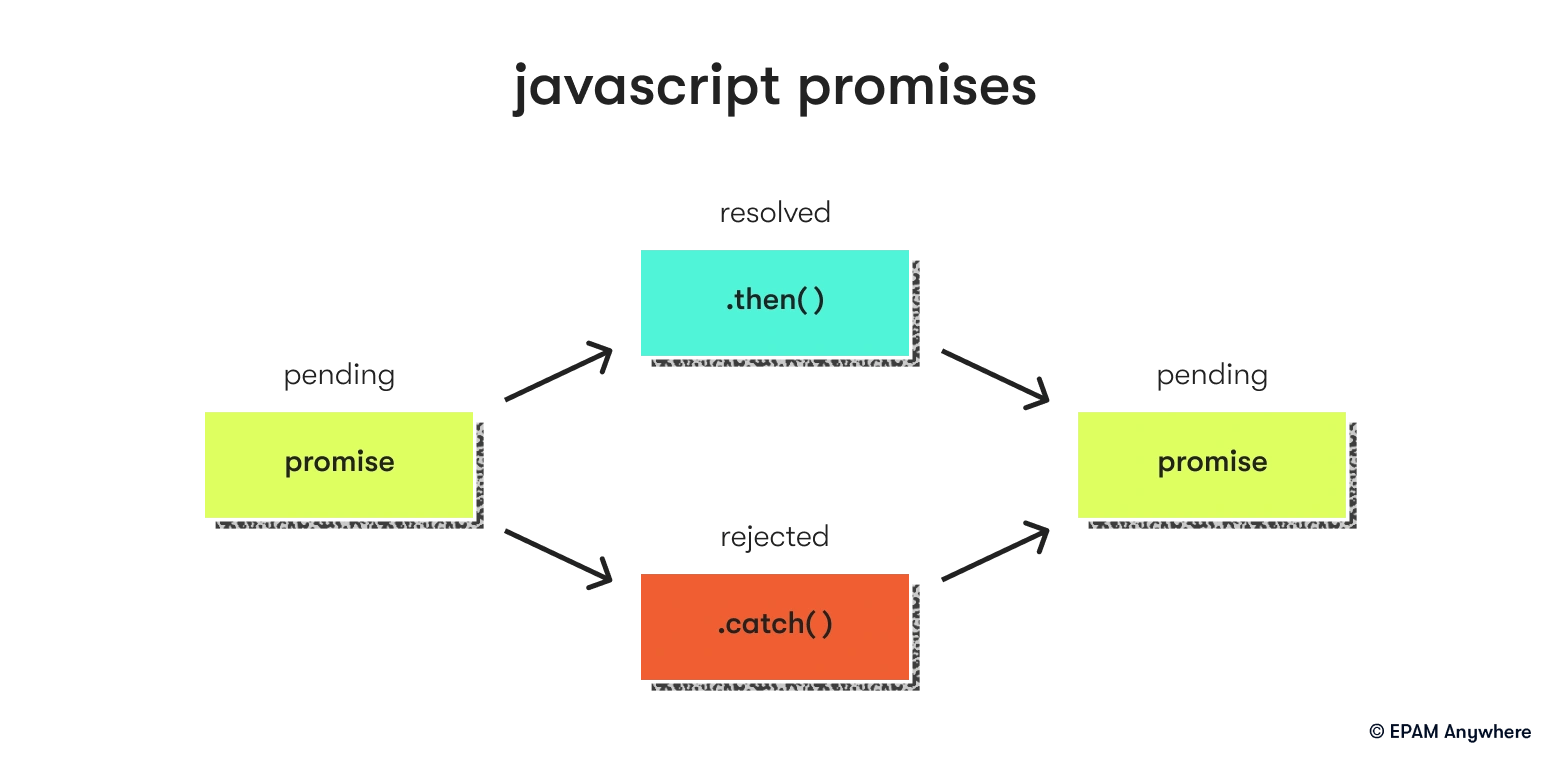
26. How do you measure the performance of a web application?
To measure the performance of a web application, developers use various tools, techniques, and metrics, such as:
- Using performance analysis and profiling tools like Lighthouse, WebPageTest, and Chrome DevTools
- Monitoring key performance metrics like First Contentful Paint (FCP), Time to Interactive (TTI), and Largest Contentful Paint (LCP)
- Implementing Real User Monitoring (RUM) and Application Performance Monitoring (APM) to measure end-user experiences and server-side performance
- Performing load testing and stress testing to evaluate the system's behavior under high traffic loads
27. What are Service Workers, and how do they benefit web applications?
Service Workers are JavaScript scripts that run in the background and intercept network requests, acting as a programmable proxy and cache manager. The benefits of Service Workers include:
- Offline capabilities, enabling web applications to work without an internet connection by serving cached resources
- Push notifications and background data synchronization
- Improved performance through the caching of assets, leading to faster load times and reduced server load
28. Explain the differences between a RESTful API and a GraphQL API
A RESTful API is an architectural style for building APIs that follows a client-server model and uses standard HTTP methods (GET, POST, PUT, DELETE) for communication. It relies on fixed URL structures and is stateless. GraphQL, on the other hand, is a query language and runtime for APIs that allows clients to request only the data they need, using a single endpoint. This leads to more efficient data fetching, better performance, and reduced over-fetching.
In sum
In conclusion, our comprehensive list of 28 web developer interview questions and answers covers various topics, from fundamental concepts to advanced challenges. This carefully curated selection will help you prepare for your next interview and showcase your expertise in web development.
Don't forget that practice and confidence are the essential ingredients in landing your dream remote job. If you're ready to put your skills to the test and pursue exciting remote job opportunities, don't hesitate to explore and apply for remote web developer jobs at EPAM Anywhere. Join our global team of talented professionals and kick-start your journey toward a fulfilling, flexible, and successful career in web development today.

With a focus on remote lifestyle and career development, Gayane shares practical insight and career advice that informs and empowers tech talent to thrive in the world of remote work.
With a focus on remote lifestyle and career development, Gayane shares practical insight and career advice that informs and empowers tech talent to thrive in the world of remote work.
Explore our Editorial Policy to learn more about our standards for content creation.
read more




